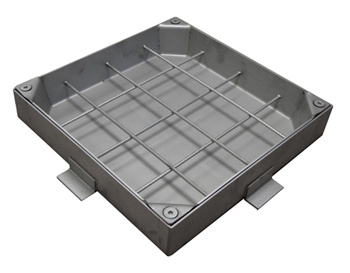Stainless Steels
We produce ASTM/ASME Grade 304, Grade 304L,304h, 316, 316L, 316H, 316TI, 321, 321H, 309S, 309H, 310S, 310H, 410S, 2205, 904L, 2507, 254, gh3030, 625, 253MA, S30815, 317L, Type 317, 316lN, 8020, 800, 800H, C276, S32304 and others special requirement stainless steel grade.

Unprotected carbon metal rusts readily when uncovered to a mix of air and moisture. The resulting iron oxide floor layer is porous and fragile. In addition, as iron oxide occupies a bigger volume than the original metal, this layer expands and tends to flake and fall away, exposing the underlying metal to additional attack. This passive movie prevents additional corrosion by blocking oxygen diffusion to the steel surface and thus prevents corrosion from spreading into the majority of the metallic. This movie is self-repairing, even when scratched or temporarily disturbed by an upset situation in the surroundings that exceeds the inherent corrosion resistance of that grade.
It has a better corrosion resistance than common metal and is widely used because of the convenience by which it’s formed into numerous shapes. The ease of welding largely is dependent upon the type of chrome steel used. Austenitic stainless steels are the best to weld by electric arc, with weld properties much like these of the bottom metallic (not cold-labored).
To keep away from corrosion in air, carbon steel is limited to roughly 480 °C (900 °F). Oxidation resistance in stainless steels increases with additions of chromium, silicon, and aluminium. Small additions of cerium and yttrium improve the adhesion of the oxide layer on the floor.
Brand��Chanson,TISCO,BAOSTEEL,POSCO,JISCO,LISCO
Stock Thickness: 0.1-200.0mm
Production thickness: 0.5.0-200mm
Width: 600-3900mm
Length: 1000-12000mm
Grade:
200 series: 201,202
300 series: 301,304,304L,304H,309,309S,310S,316L,316Ti,321,321H,330
400 series: 409,409l,410,420J1,420J2,430,436,439,440A/B/C
Duplex: 329,2205,2507,904L,2304
Surface: No.1,1D,2D,2B,NO.4/4K/hairline,satin,6k,BA,mirror/8K
- Type 304, the most typical grade of chrome steel with 18% chromium, is immune to roughly 870 °C (1,600 °F).
- Stainless steels have a protracted historical past of utility in touch with water due to their wonderful corrosion resistance.
- Other gases, similar to sulfur dioxide, hydrogen sulfide, carbon monoxide, chlorine, also attack chrome steel.
- The minimal 10.5% chromium in stainless steels supplies resistance to roughly 700 °C (1,300 °F), while 16% chromium provides resistance up to approximately 1,200 °C (2,200 °F).
- Resistance to different gases relies on the kind of gasoline, the temperature, and the alloying content material of the chrome steel.
As a result, A28g is classed as an Fe-based superalloy, used in jet engines, gas generators, and turbo elements. Replacing some carbon in martensitic stainless steels by nitrogen is a latest improvement.[when? ] The limited solubility of nitrogen is increased by the stress electroslag refining (PESR) process, by which melting is carried out underneath excessive nitrogen stress. Steel containing as much as zero.4% nitrogen has been achieved, resulting in higher hardness and power and higher corrosion resistance. As PESR is dear, decrease however significant nitrogen contents have been achieved utilizing the standard argon oxygen decarburization (AOD) process.
Post-weld warmth treatment is almost all the time required while preheating before welding can also be needed in some circumstances. Better corrosion resistance than Type 302. High ductility, wonderful drawing, forming, and spinning properties. Essentially non-magnetic, turns into barely magnetic when chilly worked. Low carbon content means less carbide precipitation within the warmth-affected zone throughout welding and a decrease susceptibility to intergranular corrosion.
Hot Working Of Stainless Steel 304
Under high contact-force sliding, this oxide may be deformed, damaged, and removed from elements of the part, exposing the naked reactive metal. When the 2 surfaces are of the identical materials, these exposed surfaces can simply fuse. Separation of the 2 surfaces may end up in surface tearing and even complete seizure of steel parts or fasteners. Unlike the above grades, the mechanical properties and creep resistance of this metal stay superb at temperatures as much as seven-hundred °C (1,292 °F).
Martensitic Stainless Steels
Duplex grades are usually most popular thanks to their corrosion resistance and better power, allowing a reduction of weight and an extended life in maritime environments. At elevated temperatures, all metals react with scorching gases. The most common high-temperature gaseous combination is air, of which oxygen is the most reactive component.
We have thousands tons stock of stainless steel sheet and coil with various size and grade,mainly include austenitic stainless steel, martens stainless steel (including precipitation hardened stainless steel sheet & coil), ferritic stainless steel, and duplex stainless steel.
Characteristics of Stainless Steel Sheet and Plate:
High corrosion resistance
High strength
High toughness and impact resistance
Temperature resistance
High workability, including machining, stamping, fabricating and welding
Smooth surface finish that can be easily clean
